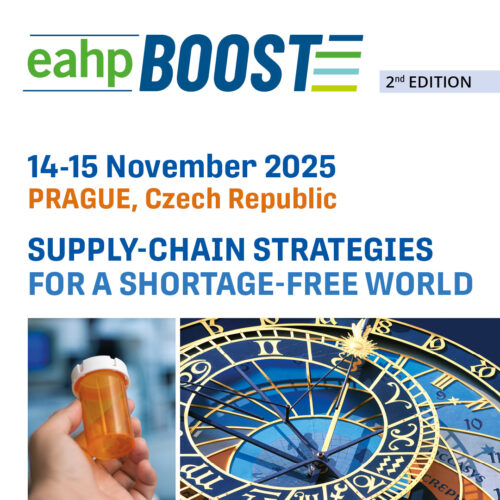Rethinking pharmacy and therapeutics committee procedures to achieve the efficiency required to overcome hospital complexity
Pdf

European Statement
Clinical Pharmacy Services
Author(s)
Sara Rodrigues, Sofia Pinheiro, Vandewalle Björn, Paulo Martins, Sofia Ferreira, Paulo Pereria, Jorge Félix
Why was it done?
Shared decision-making between pharmacists and physicians is key to PTC functioning and efficiency. Responsibilities include managing policies and procedures for appropriate use of high quality and cost-effective health technologies at hospitals. PTC performance is paramount to overall hospital efficiency.
What was done?
This project seeks to assess and redesign (optimize) existing Pharmacy and Therapeutics Committees (PTC) procedures within a University Hospital Centre (UHC – six public hospitals). The goal is to enable sound decision-making that significantly contributes to UHC key performance indicators, all while ensuring timely patient access to effective medication.
How was it done?
The project comprises four phases: (1) gathering feedback from stakeholders (PTC members; hospital service/pharmaceutical department directors) regarding their current involvement in PTC information flows, procedures, and decision-making; (2) developing a value-based criteria-matrix, across stakeholders, in a multiple-criteria decision analysis context, to guide future PTC decision-making; (3) rethinking PTC procedures and information flows; (4) assessing the effectiveness of the redesigned PTC model after 12 months. First phase included: a Likert-scale based survey1 for PTC members to evaluate their involvement in activities described in the internal PTC regulation, and a semi-structured interview-based survey2 for all stakeholders to characterize existing information flows and PTC mediated decision-making processes.
What has been achieved?
First phase: eight of 10 PTC members participated in survey1. Activities with 100% engagement of PTC members: prescription reviews; coordination with National PTC; monitoring of medicine utilization, antibiotics resistance and safety; advise the UHC management board. Activities with major non-engagement: monitoring/reporting of complementary diagnostics prescription (87.5%); medication therapy management programs (62.5%); National pharmacovigilance system activities (62.5%); therapy cost assessment (50%). In survey2 (n=14) authorization process for medicines utilization was accurately characterized, clearly identifying responsibilities for all clinical and pharmaceutical departments. Heterogeneity exists between urgent and non-urgent utilization requests. PTC members and pharmacy departments were more likely to use electronic platforms than clinical departments.
What next?
Next phases are under way to better support current competencies, information flows, procedures, and the shared decision-making processes offering an opportunity to rethink the PTC procedures in the University Hospital Centre and leverage efficiency over hospital complexity.
























